Essay: Examining Health Equity and Human Rights in Child Rights
VerifiedAdded on 2023/06/09
|5
|847
|152
Essay
AI Summary
This essay delves into the critical intersection of health equity and human rights, specifically focusing on the Convention on the Rights of the Child. It explores various facets of child rights, including the definition of a child, the importance of the convention, and the protection of children from exploitation and discrimination. The essay examines key issues such as corporal punishment, family separation, and the impact of poverty on child rights, highlighting instances where the convention's articles are breached. It analyzes the role of UNICEF in monitoring child development and addressing violence against children, ultimately concluding that while the convention aims to protect child rights, it struggles to address domestic violence and family-related challenges effectively. The essay references key literature and provides a comprehensive overview of the subject matter.
1 out of 5
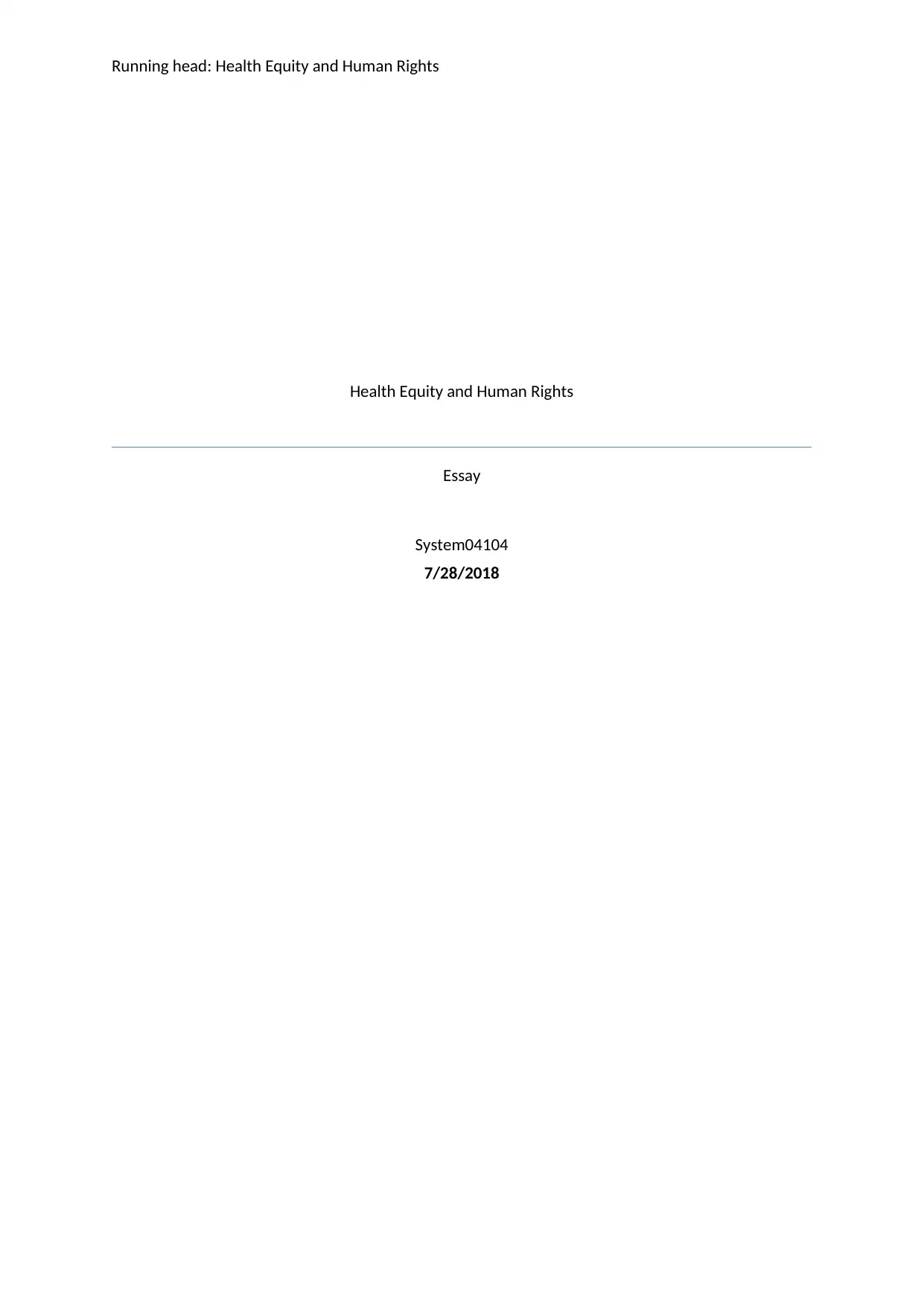
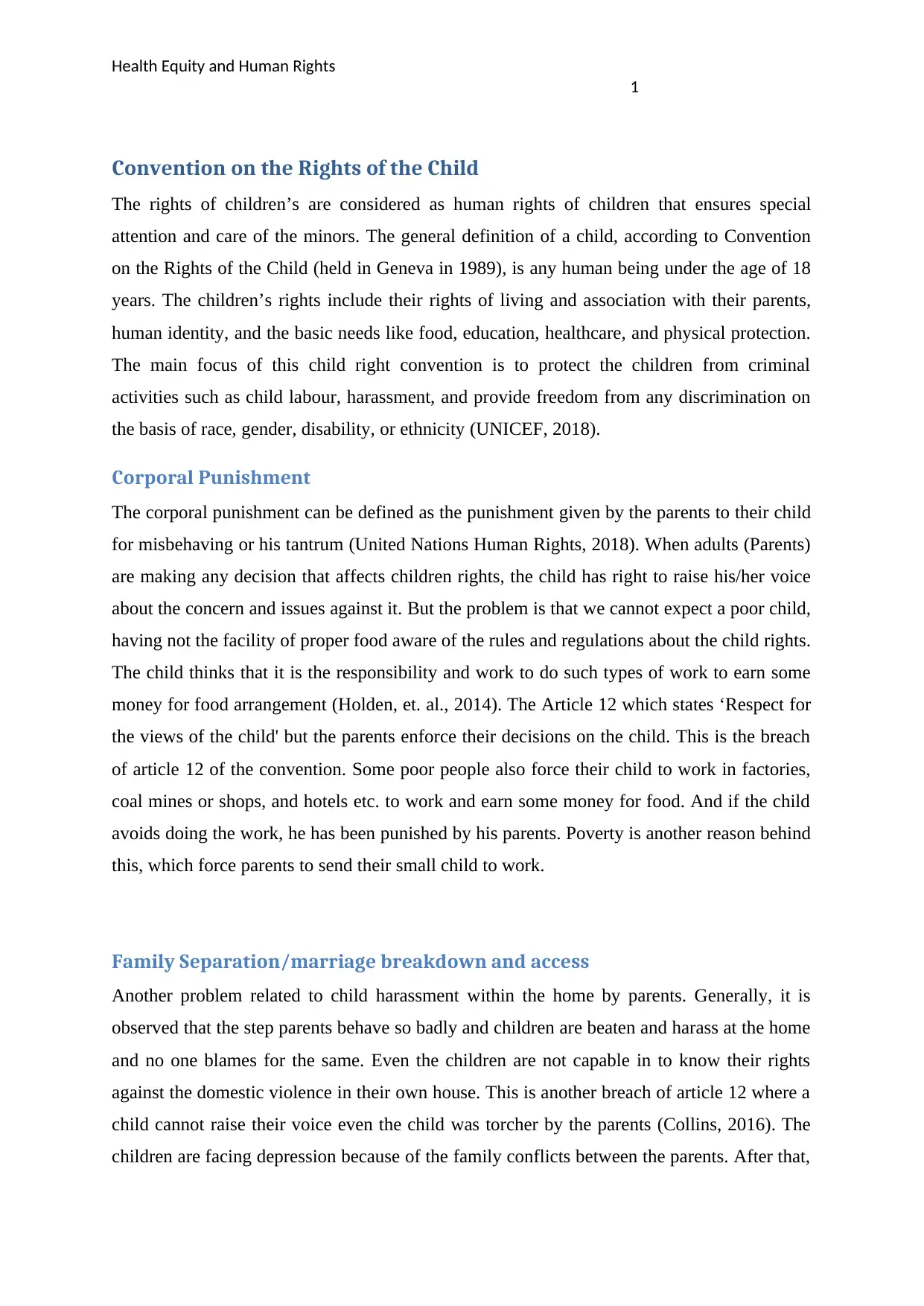
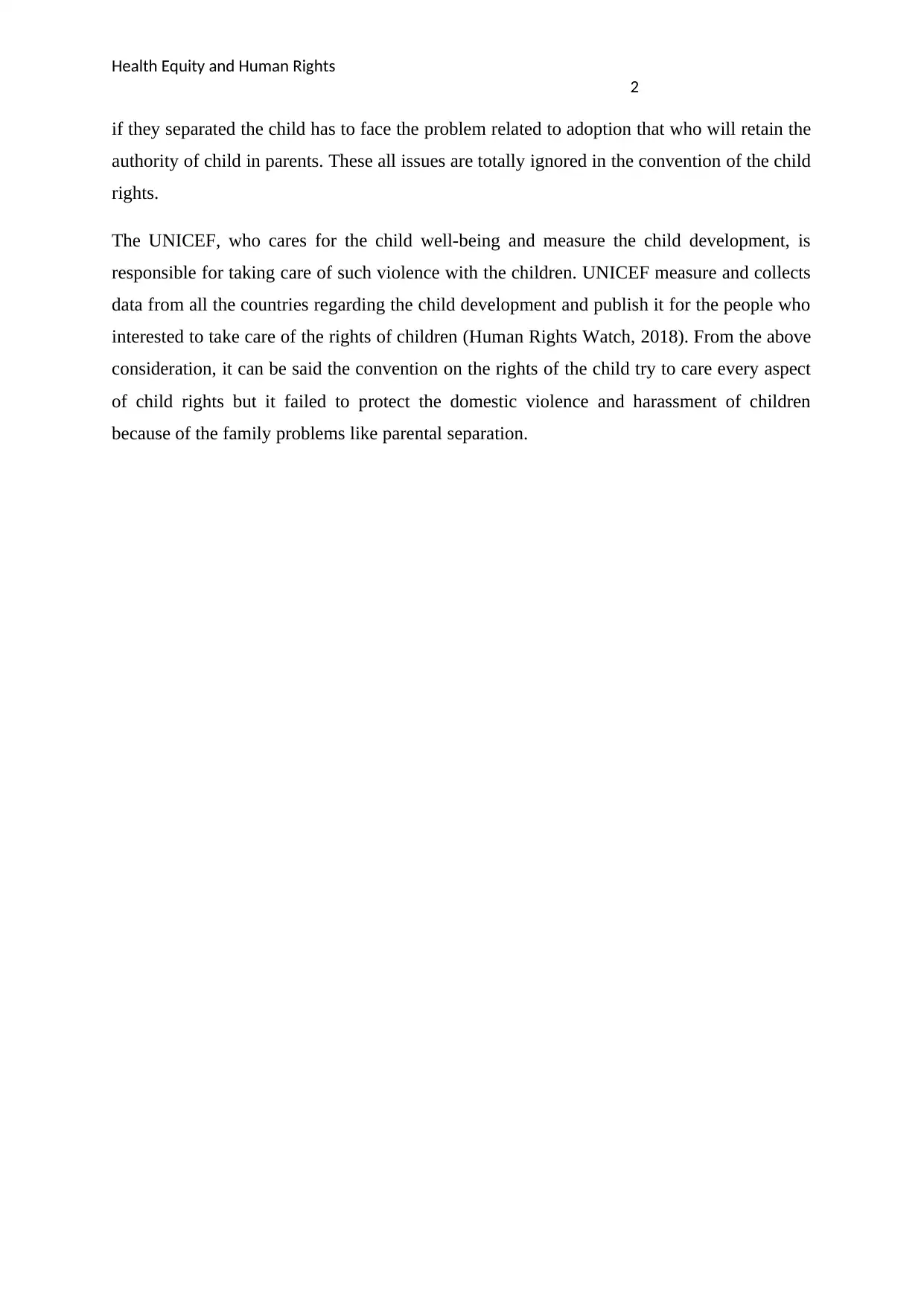

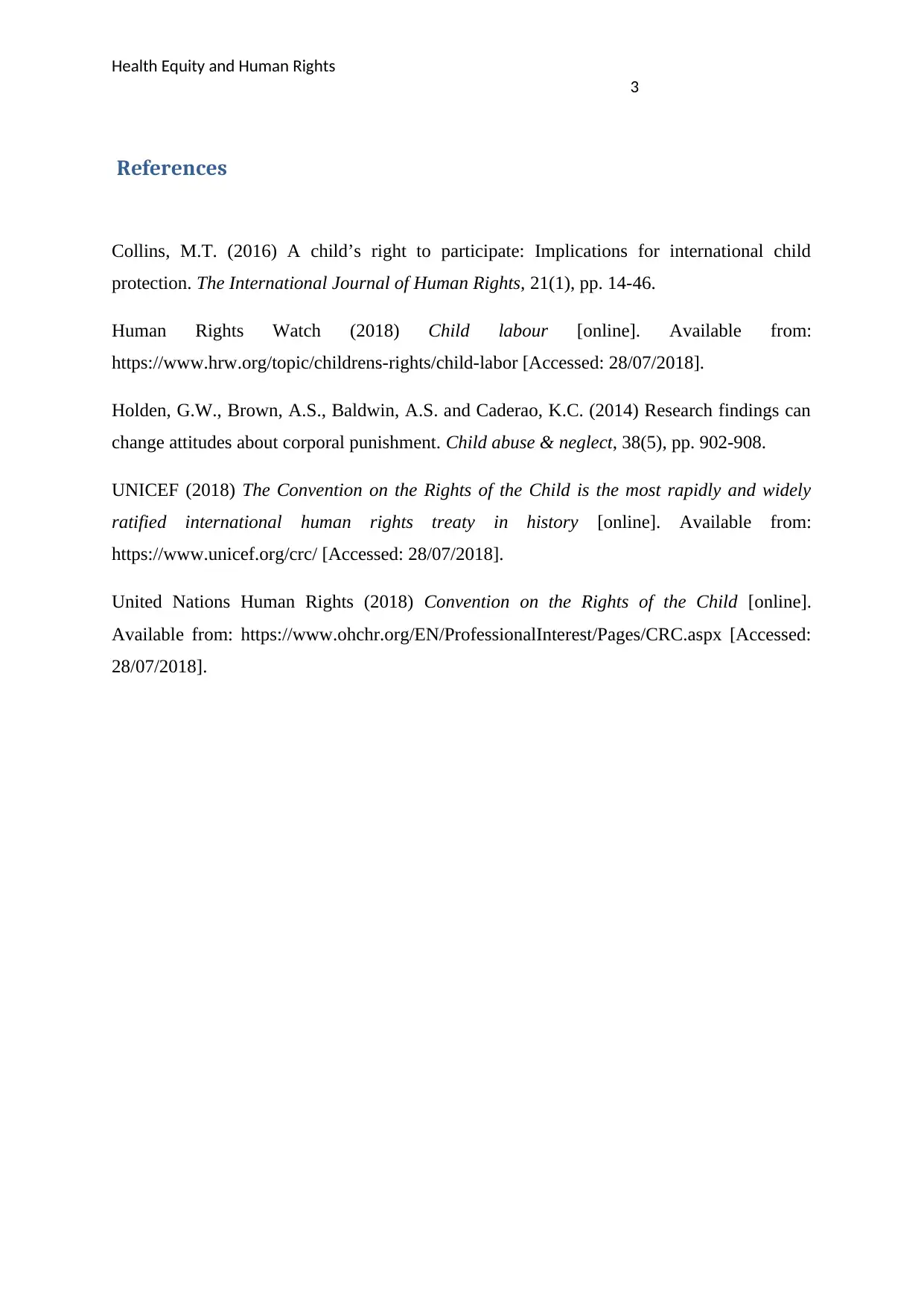
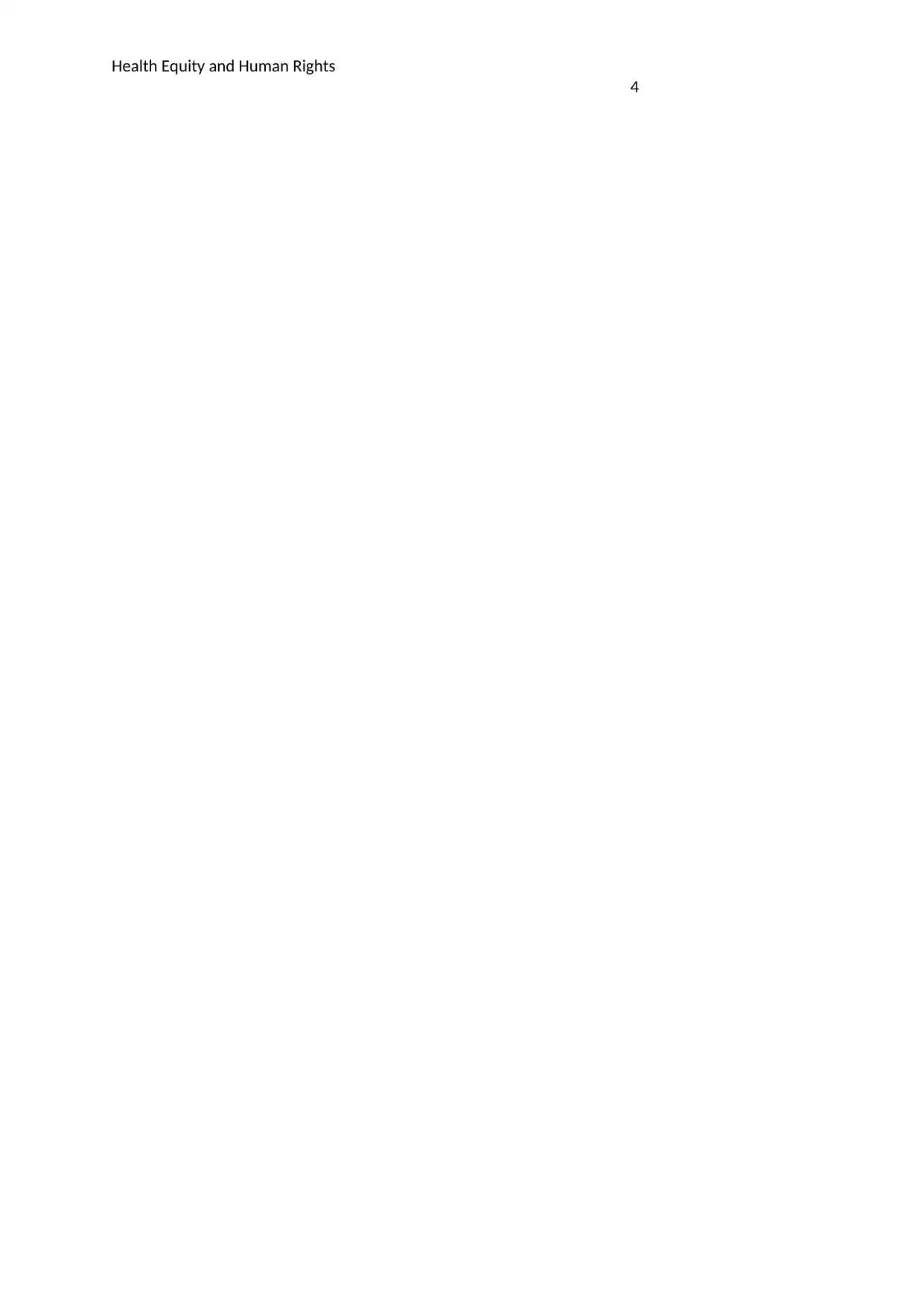




![[object Object]](/_next/static/media/star-bottom.7253800d.svg)